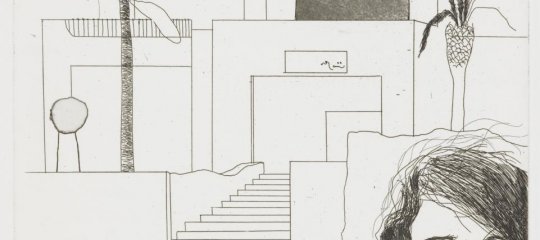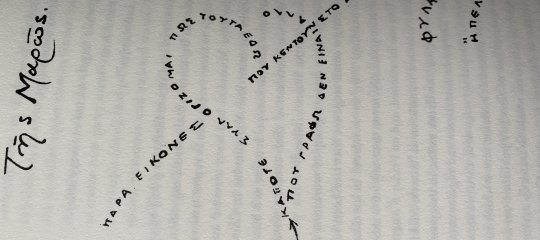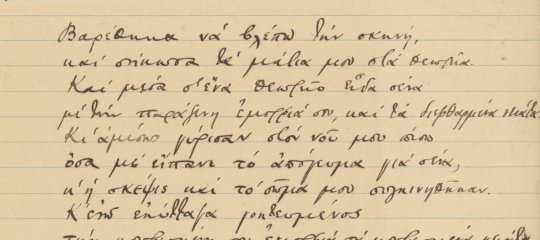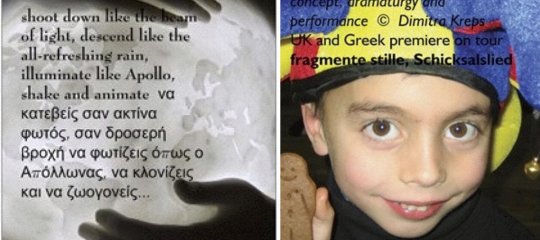Διαδρομές από τα αρχαία στα νέα ελληνικά
Το κείμενο που επισυνάπτουμε αναφέρεται στο πρόγραμμα "Διαδρομές από τα αρχαία στα νεά ελληνικά", το οποίο χρηματοδοτείται από την Ευρωπαϊκή Επιτροπή. Στόχος είναι η ανάπτυξη εκπαιδευτικού υλικού για την διδασκαλία της ελληνικής μέσω των αρχαίων ελληνικών.
4 Απριλίου 2008
Διαδρομές από τα αρχαία στα νέα ελληνικά
229746-CP-1-2006-1-GR-LINGUA-L2
ιστοσελίδα προγράμματος: http://www.elea.gr/diadromes/gr_index.html
Τα αρχαία ελληνικά αποτελούν αναμφισβήτητα φορέα πολιτισμικών στοιχείων με έντονη βαρύτητα στον χώρο των κλασικών σπουδών, γεγονός που δικαιολογεί την διδασκαλία τους σε πολλά Πανεπιστήμια και σχολεία ανά τον κόσμο.
Το Σχολείο Ελληνικών «Μέγας Αλέξανδρος», τμήμα του Ελληνοβρετανικού Κολλεγίου, δέχεται κάθε χρόνο πολλούς μαθητές, αποφοίτους κλασικών λυκείων διάφορων ευρωπαϊκών χωρών. Συνεργάζεται, επίσης, με πολλά κλασικά σχολεία σε όλη την Ευρώπη, είτε απ’ ευθείας, είτε μέσω δραστηριοτήτων του Οργανισμού για τη Διάδοση της Ελληνικής Γλώσσας (ΟΔΕΓ), βοηθώντας αυτούς που ήδη γνωρίζουν αρχαία ελληνικά να διδαχτούν τα νέα. Βάσει αυτών των δεδομένων, κατανόησε την ανάγκη δημιουργίας ενός εκπαιδευτικού υλικού, το οποίο θα βοηθάει σε αυτό το πέρασμα, από τα αρχαία στα νέα ελληνικά. Σε συνεργασία, λοιπόν, με Πανεπιστήμια και Εκπαιδευτικούς Οργανισμούς στην Αυστρία, την Ιταλία, την Ισπανία, την Βουλγαρία και το Βέλγιο, και με την χρηματοδότηση της Ευρωπαϊκής Ένωσης, προχωρά στην ανάπτυξη του εκπαιδευτικού βοηθήματος «Διαδρομές από τα αρχαία στα νέα».
Ουσιαστικός σκοπός μας είναι να δημιουργήσουμε μια μέθοδο υποστήριξης της εκμάθησης της νέας ελληνικής σε μαθητές κλασικών γυμνασίων-λυκείων, αλλά και σε μεμονωμένους ενδιαφερόμενους, στο εξωτερικό και στην Ελλάδα, που επιθυμούν να μάθουν νέα ελληνικά, έχοντας ήδη βασικές γνώσεις αρχαίων.
Το υλικό, που θα προκύψει, θα απευθύνεται στο αρχικό επίπεδο Α΄, ενώ ως προς την δομή και τον τρόπο παρουσίασής του, θα αποτελείται από 24 διδακτικές ενότητες, με κείμενα και λεξιλόγιο (με παρατηρήσεις για την ετυμολογία ή την χρήση των λέξεων στα αρχαία και νέα ελληνικά), με γραμματική και ασκήσεις, αλλά και με παιχνίδια λέξεων. Θα βρίσκεται σε έντυπη και ηλεκτρονική μορφή -εκπαιδευτικό λογισμικό- μια πρακτική που ακολουθούμε, λόγω του ότι πιστεύουμε ότι οι νέες τεχνολογίες μπορούν να αξιοποιηθούν όσο το δυνατόν καλύτερα στην εκπαιδευτική διαδικασία, με την αλληλεπίδραση χρήστη-λογισμικού. Τέλος, θα λειτουργεί και Διαδικτυακός Τόπος, όπου θα παρουσιάζεται συνεχώς εκπαιδευτικό υλικό, γνώμες-παρατηρήσεις των δασκάλων και των μαθητών, που θα χρησιμοποιούν το υλικό, καθώς και βιογραφίες προσώπων, ιστορικές παρουσιάσεις κλπ. Στον ίδιο τόπο, θα προβάλλονται και όλες οι χρήσιμες πληροφορίες για το έργο, τους σκοπούς του και τους χρηματοδότες του.
Συνοψίζοντας, πρέπει να γίνει άμεσα κατανοητό ότι από την αρχαία Ελλάδα και τους Βυζαντινούς χρόνους μέχρι την σύγχρονη εποχή, υπάρχει κοινή γραφή και ορθογραφία, κοινό λεξιλόγιο, κυρίως λόγιο, και πολλές γραμματικές και συντακτικές αντιστοιχίες. Θεωρούμε, λοιπόν, ότι εάν οι αντιστοιχίες αυτές συγκεντρωθούν, μελετηθούν και παρουσιαστούν με την μορφή ενός εκπαιδευτικού υλικού, θα διευκολύνουν σημαντικά την εκμάθηση των νέων ελληνικών, από ανθρώπους που ήδη έχουν ένα υπόβαθρο στα αρχαία. Γιατί σε κάθε περίπτωση, η γνώση της αρχαίας ελληνικής μπορεί να αποτελέσει, όχι μόνο απαραίτητο βοήθημα, αλλά και κίνητρο για την εκμάθηση της νεοελληνικής, σε όλο τον κόσμο και ιδιαιτέρως στην Ευρώπη.
Το σχέδιο αυτό χρηματοδοτήθηκε µε την υποστήριξη της Ευρωπαϊκής Επιτροπής. Η παρούσα δημοσίευση δεσμεύει µόνο τον συντάκτη της και η Επιτροπή δεν ευθύνεται για τυχόν χρήση των πληροφοριών που περιέχονται σε αυτήν.
- Εισέλθετε στο σύστημα για να υποβάλετε σχόλια










